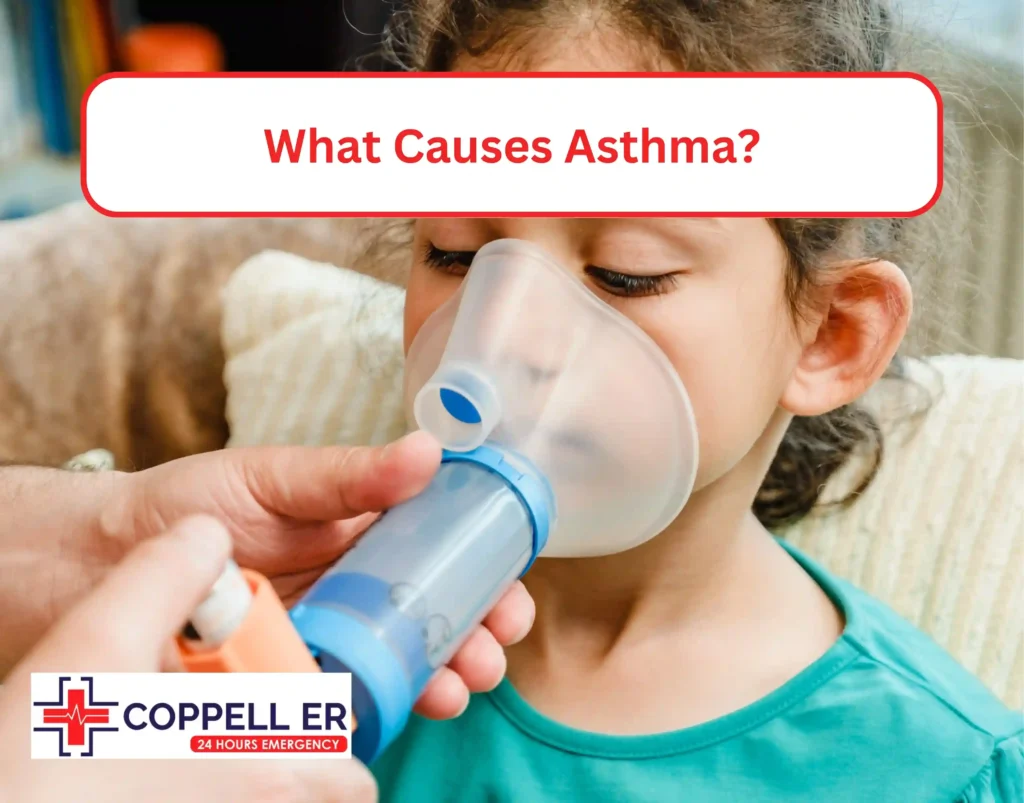Asthma can transform from a manageable condition into a medical emergency within hours. While proper asthma treatment helps most people lead normal lives, recognizing early warning signs makes the difference between a minor flare-up and a severe attack.
Understanding your asthma symptoms and following proven treatment guidelines isn’t just about daily management. It’s about preventing those critical moments when breathing becomes a struggle.
Let’s explore the essential asthma warning signs that signal when your asthma needs immediate medical attention.
What Is Asthma?

Asthma is a chronic respiratory condition in which the airways that carry air in and out of the lungs become inflamed and swollen. The narrow throat and airways make breathing hard, and the swelling worsens with viral infections such as flu.
Not only limited to adults, asthma is a common condition in children. Every 1 in 12 children has asthma in the US.1
Know Asthma Types For Proper Management
Here are some of the common types of asthma:
1. Allergic Asthma
Also known as extrinsic asthma, this is the most common type of asthma. It is triggered by the body’s immune system reacting to allergens like pollen, pet dander, and dust mites.
- Thunderstorm Asthma: This occurs when there are high levels of respiratory allergens in the air during a thunderstorm. These allergens can include grass pollen, mold spores, and fungal spores.
- Occupational Asthma: The exposure to irritants at your workplace causes trouble breathing. This is called occupational asthma. For example, a painter may develop this asthma from paint fumes, solvents, or spray paints. A hairdresser can develop occupational asthma from regular exposure to hair dust and particles or hair dye chemicals.
2. Non-allergic Asthma
Also known as intrinsic asthma or non-atopic asthma, it is less common than allergic asthma. Unlike allergic asthma, it is triggered by unspecific stimuli. Common factors include exercise, stress, certain medications, cold air, recreational drugs, and respiratory tract infections.
- Exercise-induced Asthma. Exercise-induced asthma causes the airways to narrow during intense physical activity. Symptoms like wheezing, coughing, and shortness of breath start within minutes of exercise and peak shortly after stopping.
3. Eosinophilic Asthma
Eosinophilic asthma is caused by high levels of blood cells called eosinophils in the airways. These blood cells cause inflammation. Eosinophilic asthma treatment aims to reduce the number of eosinophils in your airways.
4. Severe Asthma
Severe asthma is difficult to manage, even with high-dose medications. It is the most serious and potentially life-threatening type of asthma. Under the ADA (Americans with Disabilities) act severe asthma is recognized as a disability.2
What Causes Asthma?

While the exact cause of asthma isn’t always clear, it’s often linked to:
- Genetics: A family history of asthma or allergies increases your risk of developing asthma.
- Environmental factors: Dust, pollen, smoke, or pollution can trigger asthma symptoms.
- Allergies: Allergic asthma is a common type triggered by allergens like pet dander or mold.
- Respiratory infections: Certain respiratory infections, such as respiratory syncytial virus (RSV), colds, and flu also worsen asthma symptoms.
8 Key Asthma Warning Signs
Learning to spot the asthma warning signs can help prevent severe attacks. Here are eight asthma symptoms to watch out for:
- Frequent coughing
- Wheezing
- Chest tightness
- Fatigue
- Severe shortness of breath or difficulty speaking
- Lips or fingernails turning blue (cyanosis)
- No relief after using an inhaler
- Rapid breathing
8 Emergency Tips To Manage an Asthma Attack
In case you and anyone near you get an asthma attack don’t panic. Remain calm and take fast action by following these points:
- Use a Rescue Inhaler. Administer 1-2 puffs of a quick-relief inhaler (usually albuterol). If symptoms persist after a few minutes, take another dose as instructed by your doctor.
- Don’t Overuse the Inhaler. Excessive use of a rescue inhaler comes with adverse side effects. If it’s not helping, seek medical help instead.
- Sit Upright. Do not lie flat. Sitting upright helps to open the airways more making it easier for you to breathe.
- Calm Please. Things can get worse if you are out of control. Breathe slowly and evenly to help relax and regain control.
- Avoid Triggers. For allergic asthma treatment, avoid the allergens as much as possible. Wear a mask if you have to remain close to your triggers.
- Follow an Asthma Action Plan. Stick to your personalized asthma action plan prescribed by your doctor.
- Call for Emergency Help. If symptoms do not improve in 15 minutes go to the nearest emergency room immediately.
- Be Prepared. Always keep your rescue and a spare inhaler with you. Try to educate people surrounding you on how to respond to such emergencies.
Note: Don’t wait to seek professional care if symptoms are severe or unresponsive to emergency tips.
Emergency Asthma Treatment

An asthma attack is a life-threatening condition and timely medical intervention can save lives. Emergency rooms follow asthma treatment guidelines to ensure swift and effective care. Here is how emergency rooms treat asthma patients:
Oxygen Therapy
Hypoxia is the leading cause of death in acute asthma cases. Therefore, oxygen is given through a tube to achieve an oxygen saturation of at least 92%.3
Quick-Relief Medicines
The following quick-relief medicines for asthma are given through inhalers or nebulizers to open up the airways.
- Corticosteroids: Corticosteroids are a common treatment for asthma because they ease inflammation and swelling in the airways.
- Bronchodilators: Bronchodilators are the first-line treatment for acute asthma which open airways by relaxing the muscles around them.
IV Medication
IV therapy is given when inhaled therapy and steroids are ineffective. They provide fast relief from asthma.
Final Thoughts
Don’t rely on home treatment when an asthma flare-up occurs, rush to your trusted emergency room. Emergency rooms are prepared to manage asthma attacks by administering oxygen, quick-relief medicines, and treatment options suited to your case. Asthma may be a lifelong condition, but it doesn’t have to control your life.
Get Asthma Treatment in Coppell
FAQs
1. Is asthma an infectious disease?
No, the cause of asthma is not a virus or bacteria, so it is not contagious and cannot be spread from person to person. However, asthma is hereditary and can be passed down from generation to generation.
2. Who is more prone to asthma?
Asthma risk is higher in people with allergies or family history of asthma. Children (especially boys), female adults due to hormonal changes, smokers, and those exposed to air pollution face increased chances of developing asthma symptoms.




